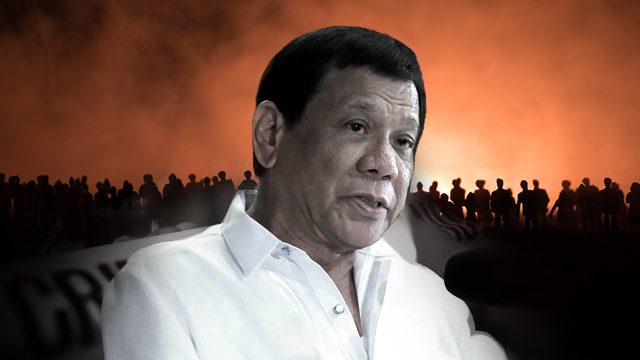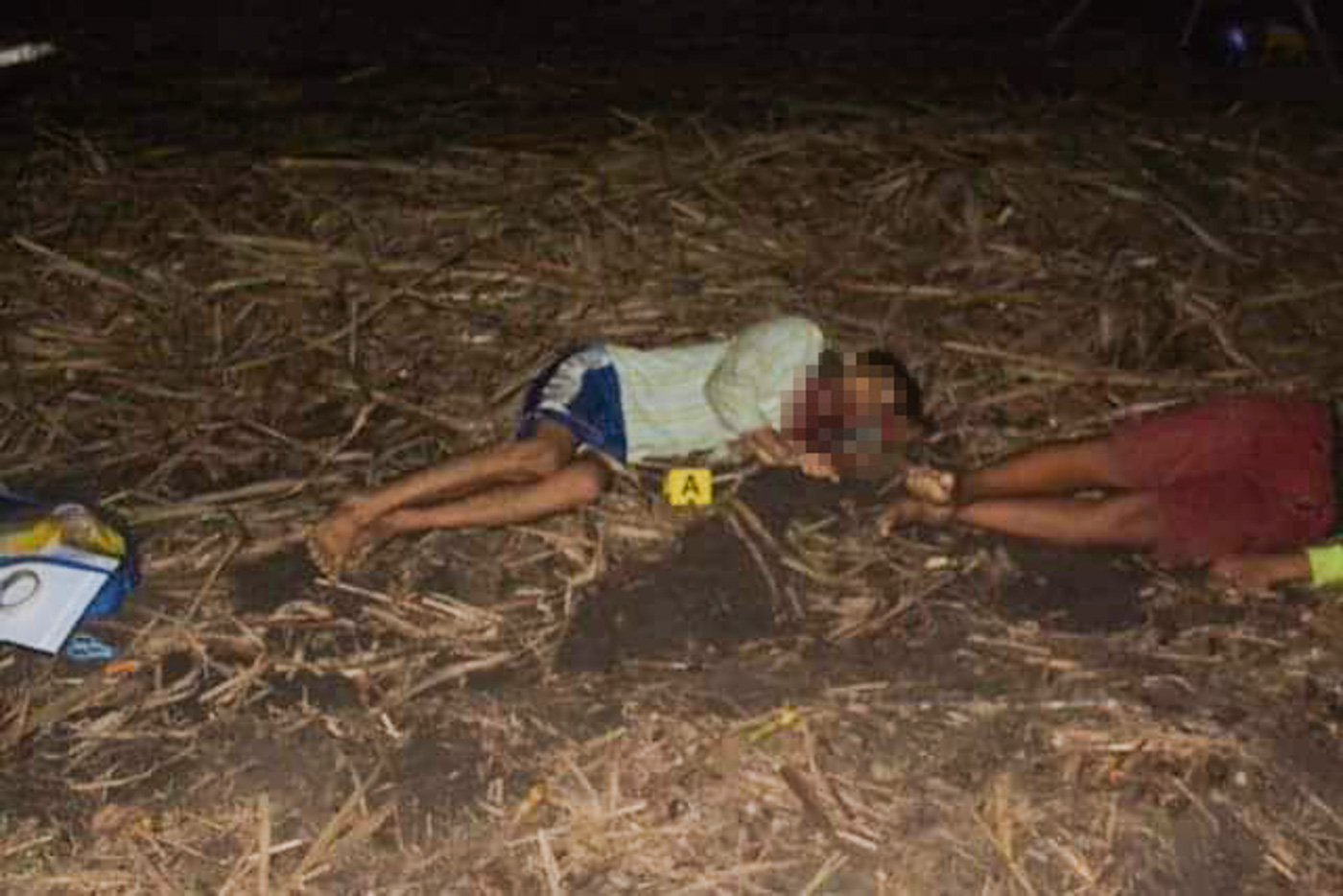SUMMARY
This is AI generated summarization, which may have errors. For context, always refer to the full article.


AT A GLANCE
- Karapatan, a human rights organization, reported that at least 134 have been killed since Duterte took office in June 2016.
- The most targeted human rights defenders are farmers.
- 2017 was the bloodiest year for human rights defenders under the Duterte administration.
MANILA, Philippines – The recent slay of National Democratic Front (NDF) consultant Randy Malayao is just one of the many attacks on human rights defenders (HRDs) in the country.
Malayao worked with peasant groups in Cagayan Valley, pushing for the welfare of farmers and fisherfolk, and fighting against militarization in remote areas. (READ: Murdered activist Randy Malayao yearned for lasting peace)
Many other HRDs who have fought for similar causes have been under threat in spite of the existence of the Bill of Rights – 22 sections under Article III of the 1987 Philippine Constitution that afford Filipino citizens protection from threats to their life, security, and privacy, among others.
But rhetoric and reality do not always match. Human rights violations have persisted from administration to administration even with the so-called “human rights Constitution” in place. (READ: Things to know: Human rights in the Philippines)
Killings densest in Mindanao
Karapatan, a human rights organization, gave Rappler a list of those killed under the Duterte administration alone. There have been at least 134 killed since July 12, 2016, the latest of whom was Malayao. Karapatan told Rappler that some names have been excluded from the list at the request of the victims’ families.
The following map shows the provinces where HRDs have been killed since Duterte took office in June 2016.
The map shows a concentration of killings in the provinces of Bukidnon, Compostela Valley, Negros Oriental, and Negros Occidental. These provinces have long had conflicts over land, the victims both farmers and indigenous peoples (IPs).
In Bukidnon and Compostela Valley, most killings were perpetrated against farmers, some of whom were IPs as well. Meanwhile, in Negros Occidental and Negros Oriental, killings against sugar farmers have persisted since the colonial period.
The majority of the killings took place in Mindanao, with 86 dead, followed by the Visayas with 29, and with scattered killings throughout Luzon amounting to 19.
Mass killings
A number of these killings were not isolated, like the murder of 3 members of the Sitio Inalsahan Indigenous People Organization in July 2016, 3 members of the Nagkahiusang Mag-uuma sa Laak in March 2017, two members of the Farmers Association in Davao City in September 2017, and 3 members of Compostela Farmers Association in August 2018.
In Lake Sebu, South Cotabato, 8 members of Tamasco (T’boli-Manubo Sdaf Claimants Organization) were slain in December 2017 after months of protesting the expansion of a coffee plantation in their ancestral lands. Global Witness reported that the military perpetrated the killings. (OPINION: Coffee and the blood of indigenous peoples)
In Sagay City, Negros Oriental, farmers were shot dead while resting in a makeshift shelter in Hacienda Nene. A Rappler report from October 2017 said that 9 were shot dead, including 4 women and 2 minors. Karapatan listed only 7. The slain farmers were members of the National Federation of Sugar Workers and were killed on the first night of bungkalan (land cultivation), an act of protest done to cultivate idle lands that have not been redistributed to farmers.

In Laur town, Nueva Ecija, 4 farmers were shot dead inside the Fort Magsaysay Military Reservation. They were all members of the Alyansa ng mga Magbubukid na Nagkakaisa 3100 (Almana). According to a Bulatlat report, the killers might have been goons of a cop stationed at Fort Magsaysay. The Almana farmers had long been involved in a fight for at least 3,000 hectares of land within the military reservation.
In Guihulngan City, Negros Oriental, 6 were killed and 31 arrested in police operations targeted at lawless elements, which means that the targets purportedly had illegal arms and drugs in their possession. There was no confirmation from Negros Oriental police whether those killed were rebels.
In a December 2018 Rappler article, the victims were reported to have had “350 grams of suspected shabu (methamphetamine hydrochloride) worth more than P2 million in Negros Oriental’s capital city, Dumaguete.”
Farmers targeted
The following graph shows that most of the murdered have been farmers.
Violence against farmers is nothing new in the Philippines. In October 2018, Rappler compiled a list of massacres and incidents of violence against farmers since 1950.
Much of the violence is a reaction to farmers fighting for agrarian reform. Tensions have been present between farmers and landlords – and landlords’ goons – amid tenancy, lease, and other tenurial arrangements. (READ: Opinion: Is agrarian reform a dying issue?)
Ibon, a non-governmental organization focusing on development issues, reported that as of 2017, “land continues to be heavily concentrated in the hands of big landlords and businesses with less than a third of landowners controlling over 80% of agricultural lands.” (READ: Farmers still hungry after 30 years of agrarian reform)
Attacks on IPs are a matter of land as well. Development projects like property and dam construction hamper IPs’ ability to fight for their ancestral lands. (WATCH: Rappler Talk: The love-hate relationship between Duterte and the Lumad)
Deadliest year
2017 has been the deadliest year for HRDs under the Duterte administration. Karapatan’s list shows that 70 HRDs were killed in 2017, 22 more than was reported by Global Witness, an international organization that documents attacks specifically on environmental and land activists in the world.
The figure clearly excludes killings under Duterte’s war on drugs, which has seen from 20,000-30,000 dead, according to human rights groups. Phelim Kine, deputy director of Human Rights Watch Asia Division, has said that drug war killings “could amount to crimes against humanity.”
HRW’s assessment of the human rights record of Duterte’s predecessor, then-president Benigno Aquino III, was not positive, either. According to HRW, “While Aquino’s presidency has had a mixed record on rights issues, ultimately he has failed to make the institutional reforms to ensure a lasting positive human rights legacy.”
HRW also criticized then-president and now-House Speaker Gloria Macapagal Arroyo for her term’s clampdown on suspected communist rebels.
The threat hanging over HRDs has been present from administration to administration. Given years of impunity and unsolved killings, who protects the defenders? – Rappler.com
Add a comment
How does this make you feel?
There are no comments yet. Add your comment to start the conversation.